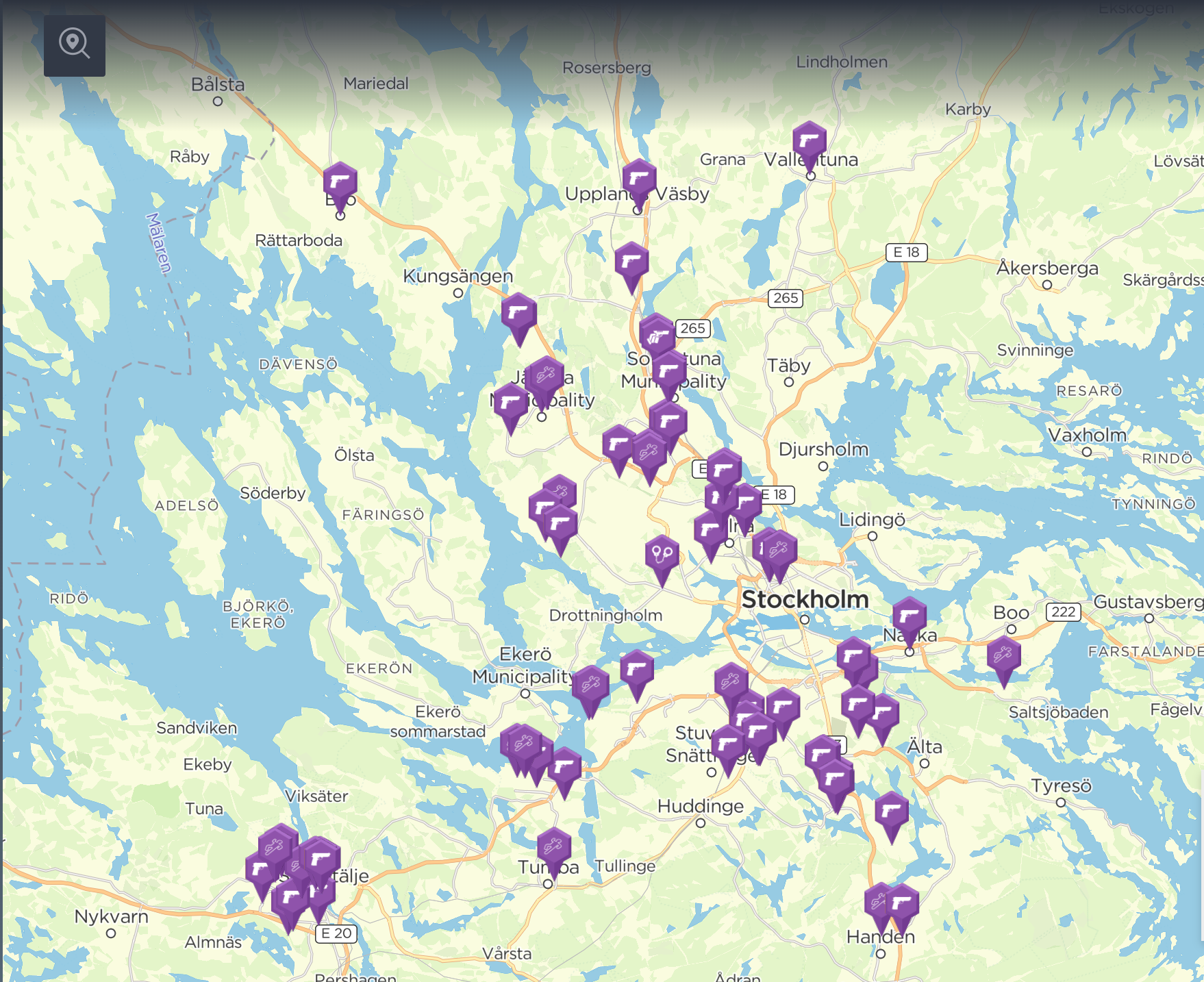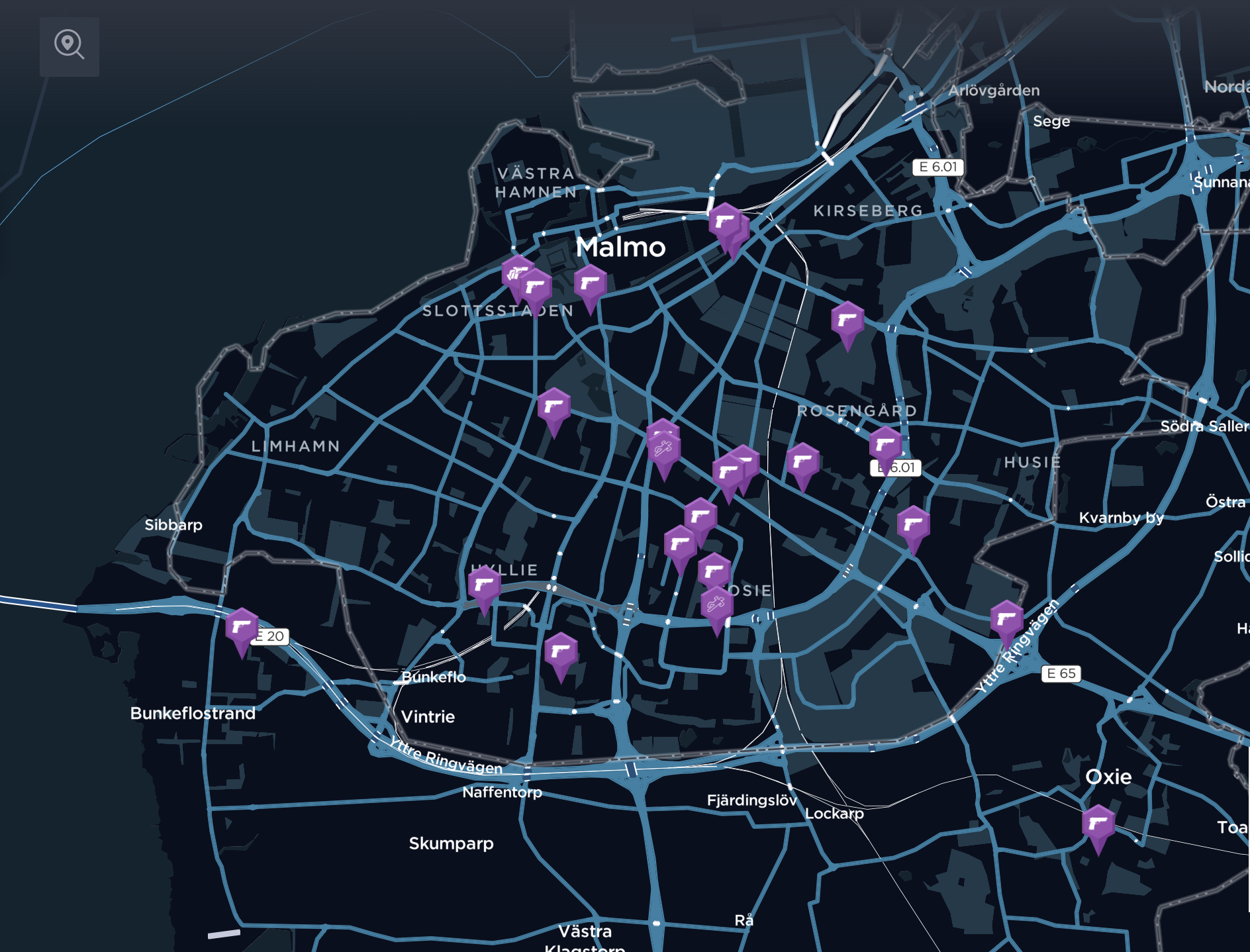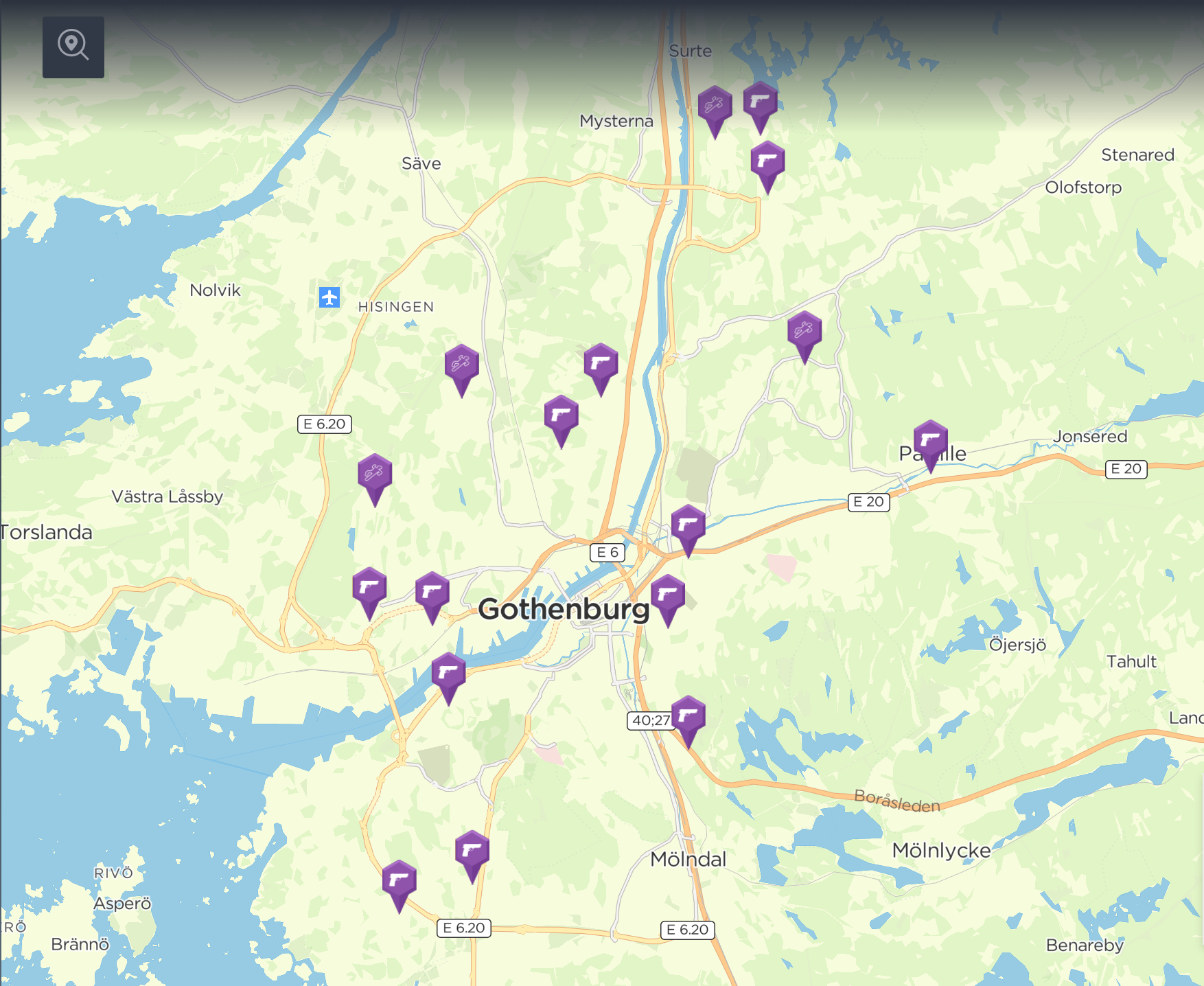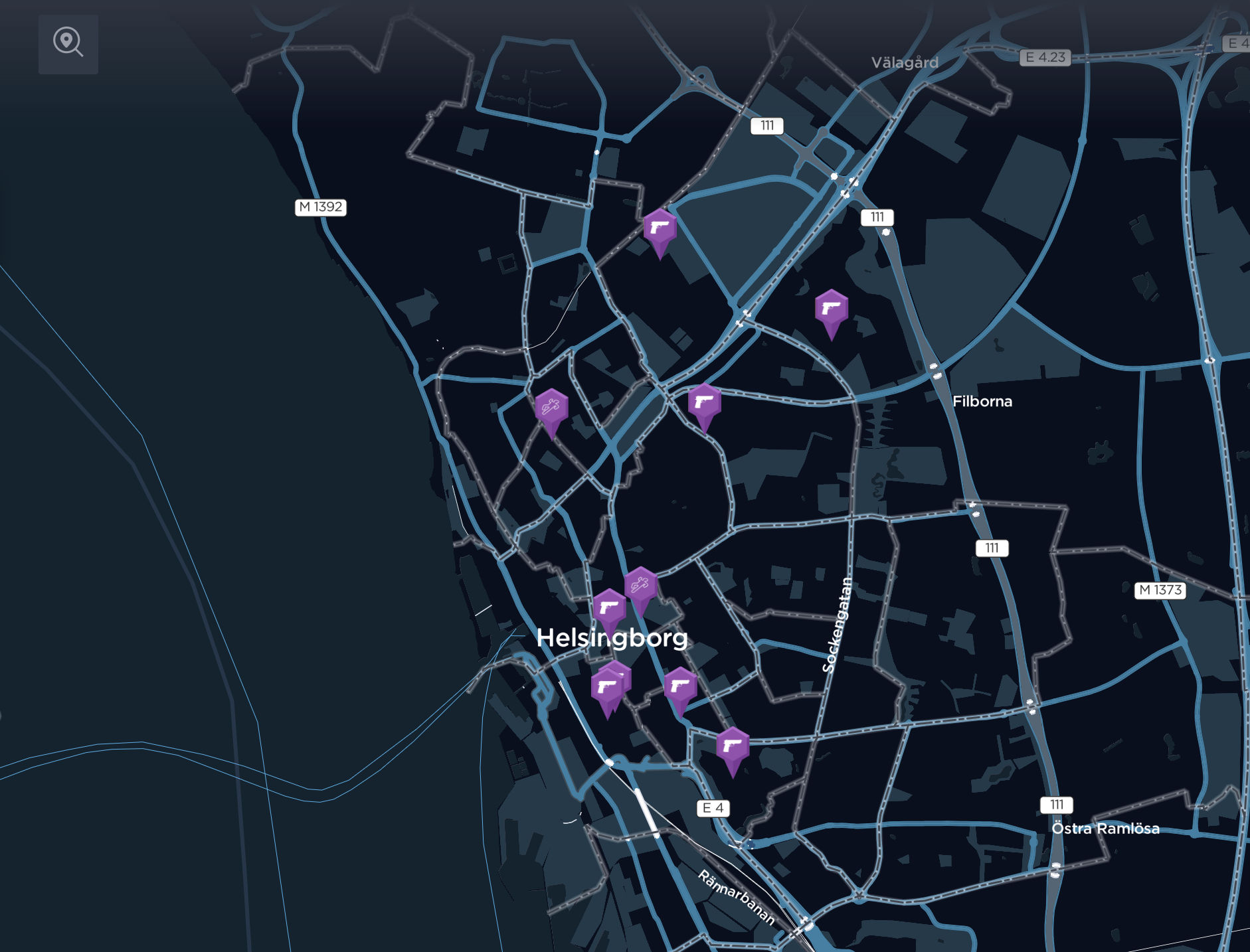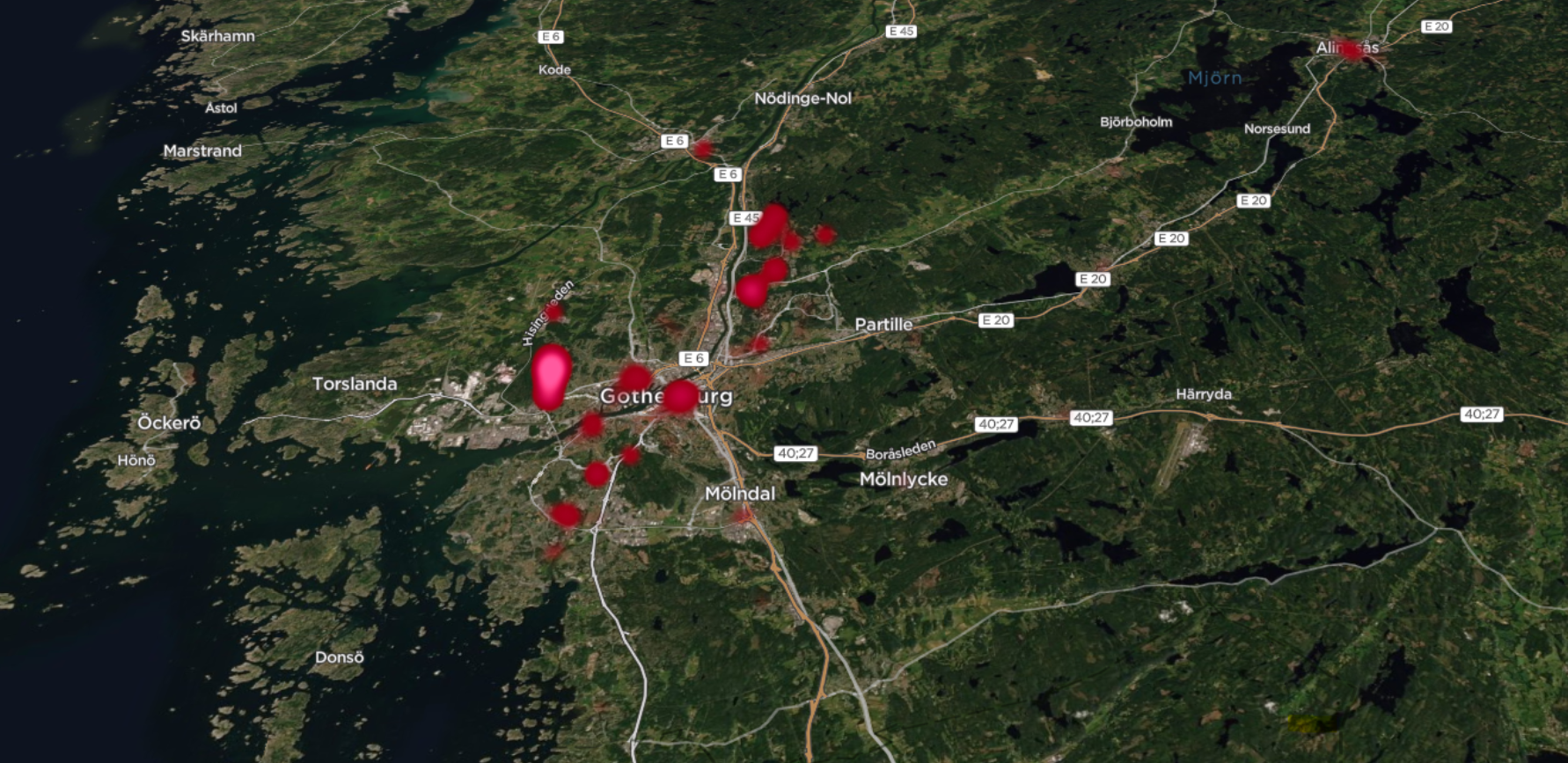The rise of Sweden as Europe’s gun crime capital
Sweden is often perceived as a safe place, with a low crime rate and progressive politics, this is, however, a misconception. Gun crime in Sweden is rife and as of the 15th November 2022, according to Swedish police statistics, there has been a total of 360 shootings this year. As a result of these shootings, there have been 57 fatalities, 98 people wounded and multiple residences, businesses, and buildings have been shot at.
Sweden is the only European country in which fatal shootings have significantly increased and, having been a country with one of the lowest gun violence rates in Europe, they now have one of the highest, in the space of just two decades. A report published by the Swedish National Council for Crime Prevention further illustrates the disparities between Sweden and the rest of Europe, indicating that in 2017, Europe as a whole recorded 1.6 gun violence deaths per million people, whereas Sweden recorded almost 4 per million people.
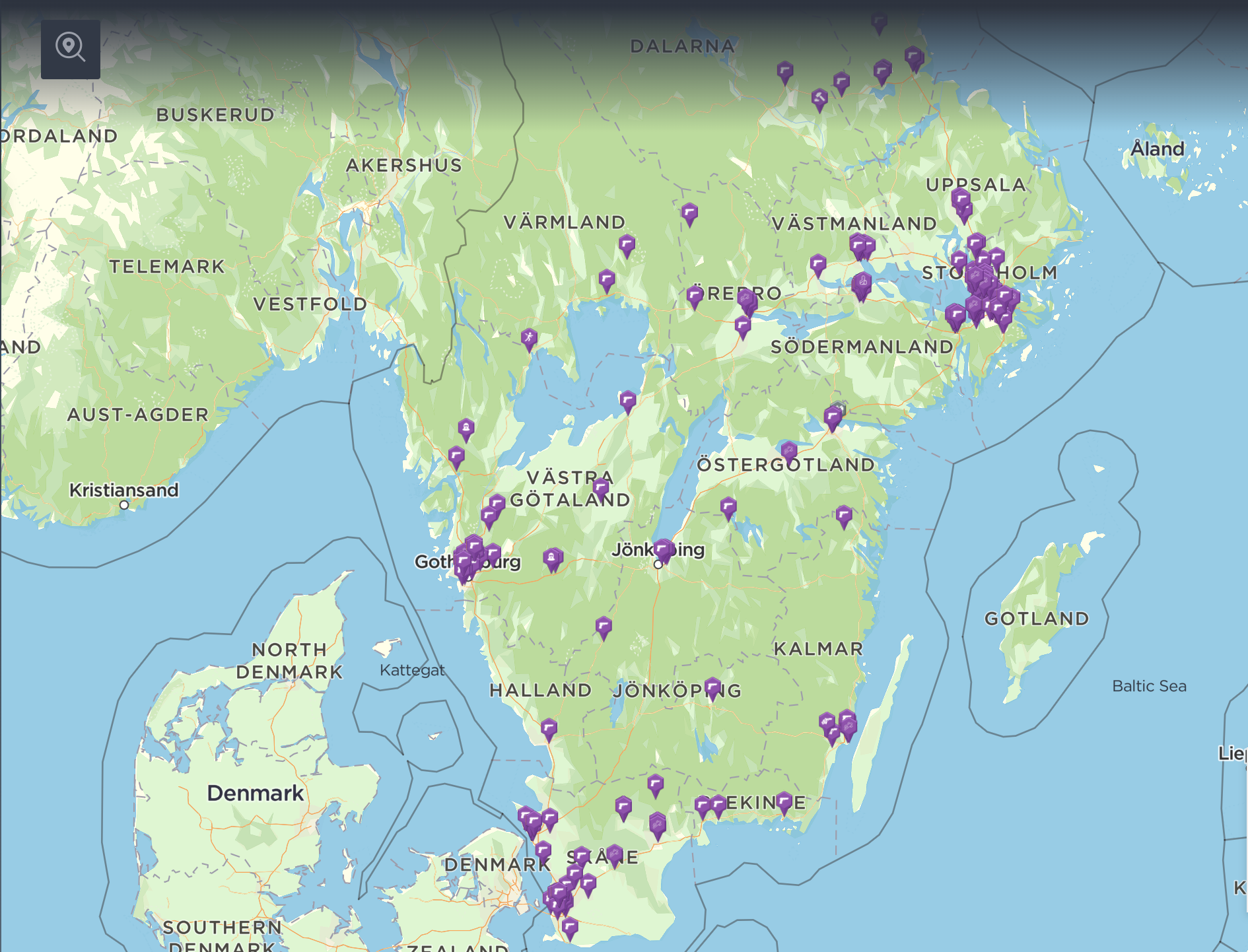
A snapshot of shooting-related incidents reported by our analysts in Sweden in 2022. [Source: Intelligence Fusion]
The majority of shootings in Sweden are however related to organised crime. With 8 in 10 shootings linked to organised crime, gun homicides have increased, whilst familial/domestic-related gun homicides have decreased. Justice Minister Morgan Johansson argued that “over the last 20 years… Sweden has seen organized crime become established in a way that it wasn’t before, closely associated with the drug trade”, which led to proliferated gun violence.
In recent years, the epicentre of this gun violence has been focused in the metropolitan areas of Stockholm, Gothenburg, and Malmö but is increasingly spreading across the country. As the rates of gun violence ricochet throughout the country, the nature of this violence has also changed to become more destructive and deadly. Since an escalation in shootings in 2010, Swedish criminologist Ardavan Khoshnood has witnessed a shift: whereas in the past gunshots to arms, hands, and legs were common, he is now seeing an increased amount of shots to the head and has stated that gangs are now “shooting to kill” – a worrying development in Sweden’s gun violence epidemic.
What has contributed to gun crime in Sweden?
Several factors have facilitated this drastic rise in gun crime across Sweden. Firstly, the escalation in fatalities as a result of gun violence can partly be attributed to Sweden’s somewhat “lax” criminal sentencing laws: teenagers may receive a maximum sentence of only 4 years for gun-related murder, meaning they are the ideal recruits for gangs and are actively sought out as a result. Secondly, according to police reports, the increase in gun violence has been aided by a high inflow of trafficked weapons originating from the western Balkans. It is abundantly clear that criminal sentencing laws need to be reformed and that greater effort is made to tackle the influx of illegal weapons.
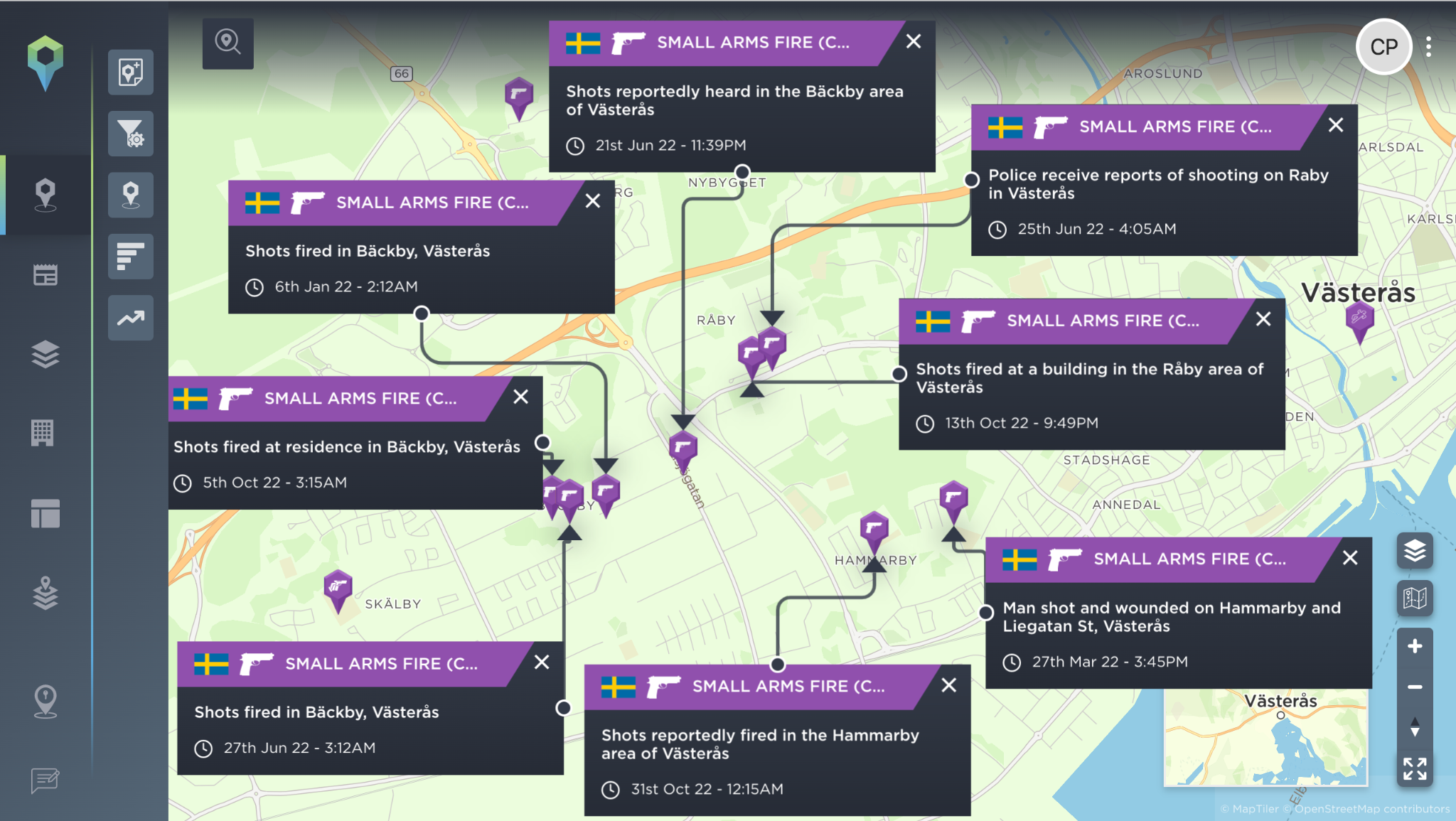
This year Intelligence Fusion has reported a cluster of shooting incidents in the Råby, Bäckby, and Hammarby areas of Västerås. These are examples of areas that in the past have not experienced high concentrations of gun crime - yet it is becoming increasingly more prevalent. [Source: Intelligence Fusion]
Finally, in recent years, this violence has been partly linked to inadequate integration of the migrant population within Sweden. It is estimated that 20% of Sweden’s 10.5 million population was born abroad, with a mix of European migrants and those from countries such as Syria, Somalia, Iraq, and Afghanistan. The government claims that gang crime, driven by the drug trade, is linked to the poor integration of Sweden’s large migrant community. Indeed, former Prime Minister Magdalena Andersson has stated that “integration has been too poor at the same time as we have had a large immigration” creating “parallel societies in Sweden” with “completely different realities”.
These so-called “parallel societies” have created gaps in which criminal enterprises have flourished and subsequently so has gun crime. Swedish police have labeled at least 61 areas, all with high immigrant populations as “vulnerable” to criminal activities. A study conducted between the years 2006 and 2014 found that a shooting was close to 5 times more likely to occur in an area labeled as socially vulnerable.
Furthermore, the report published by the Swedish National Council for Crime Prevention argues that “the increase in gun homicide in Sweden is closely linked to criminal milieux in socially disadvantaged areas”. Lack of integration will only serve to further increase these areas. Therefore, it is clear that tackling gun violence should start with a better and more comprehensive migrant integration policy. The interplay between these factors has contributed to Sweden’s gun violence epidemic.
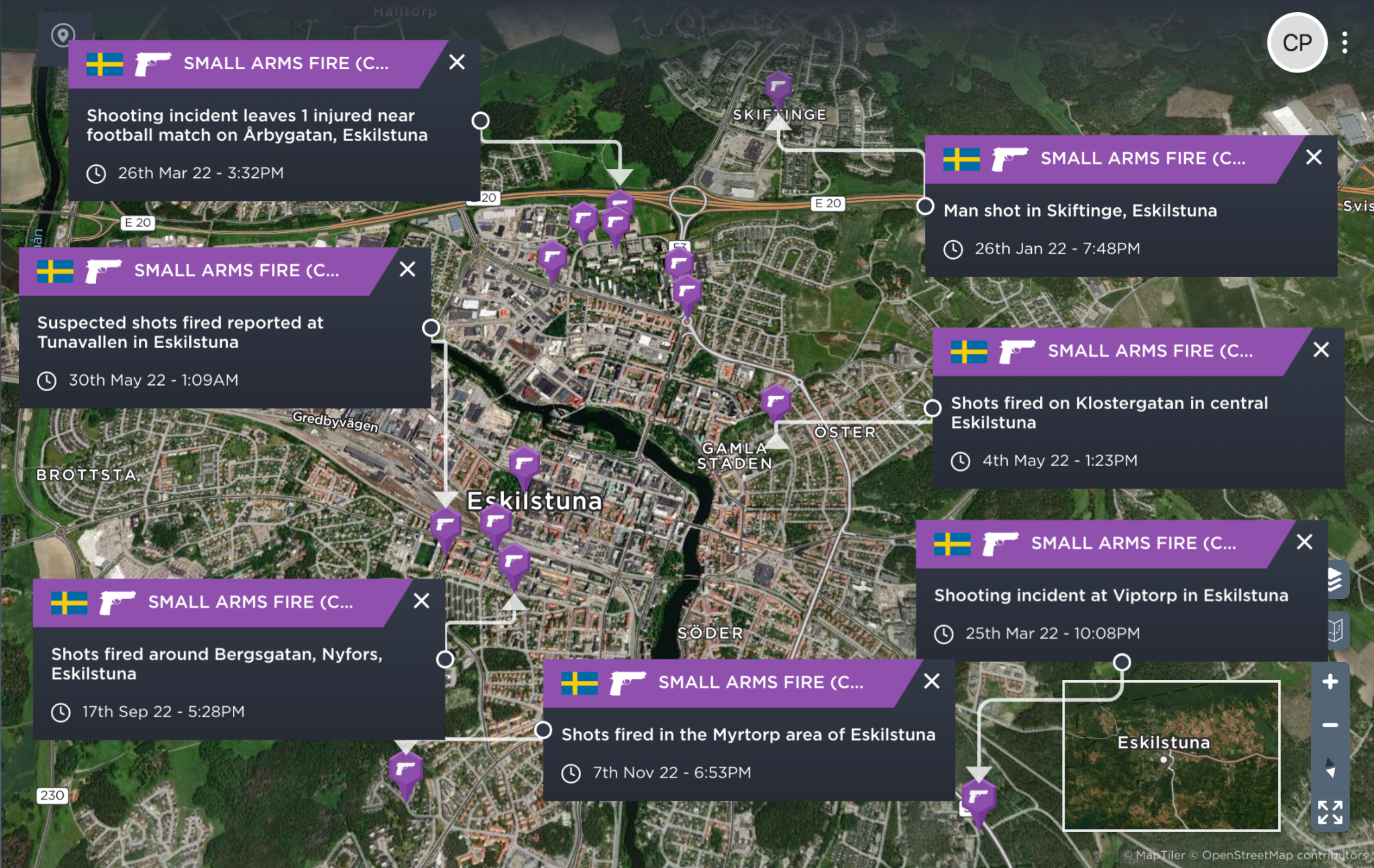
Several areas in Eskilstuna have been labeled as “vulnerable” by police. Our data confirms this, showing that many buildings have been the target of criminal activities in 2022. [Source: Intelligence Fusion]
What has been done to tackle gun crime in Sweden?
Swedish authorities have certainly not been complacent in trying to tackle the problem. Indeed, several initiatives have been launched across Sweden, largely based on American programs. In America, these programs have had positive effects: Boston witnessed 63% fewer murders amongst youths, New Orleans saw a 32% reduction in homicide amongst gang members, Stockton recorded 42% fewer fatal shootings and Cincinnati saw a 41% reduction in gang-involved homicides.
A similar program was piloted in Malmö from 2018 to 2020, under the name “Sluta skjut” – which translate to Stop Shooting. In brief, the program is a multi-faceted strategy based on deterrence and aims to reduce and avoid violence by sanctioning the group responsible in its entirety and not just the individuals responsible for individual acts. When instances of violence occur, sanctions are rapidly issued and the police cooperate in tandem with other agencies such as the Tax agency or the Customs agency, for example, issuing sanctions targeted at harming the activities of the group involved. Additionally, the program also offers to help criminals search for a way out of gang activities.
The program positively affected criminal activity: in 2018 there were 47 shootings in Malmö which was reduced to 20 in 2020. Having witnessed positive outcomes in Malmö, the program was therefore permanently adopted into the police’s gun violence reduction strategy and extended to other areas of Sweden in 2021. However, with 2022 projected to be one of the highest and most deadly years ever for gun violence in Sweden, the efficacy of such initiatives comes into question.
Gun crime in Swedish politics and its repercussions
With gun crime at an all-time high, it is unsurprising that crime levels were at the forefront of the 2022 elections. Before the election, 41% of those polled said crime was their biggest concern according to the Gothenburg University’s Society, Opinion and Media Institute. In August 2022 (1 month before elections) in Eskilstuna, a mother and child were shot and wounded when they were caught in the crossfire of a gang-related shooting. After the attack, the child’s father said to the Dagens Nyheter newspaper: “How can we live in a place where children risk being shot in a playground? There’s no safety anymore” – a feeling that resonated with many Swedes.
These conditions coupled with the nationalist Sweden Democrats’ anti-immigration and anti-crime-centered campaigns paved the way for them to win their highest number of votes in decades. Moreover, the nationalist party has expanded its share of the vote from 5.7% in 2010 to 20.5% in 2022. This is a huge increase over only 4 electoral cycles and is partly a product of increased and seemingly uncontrolled criminal levels.
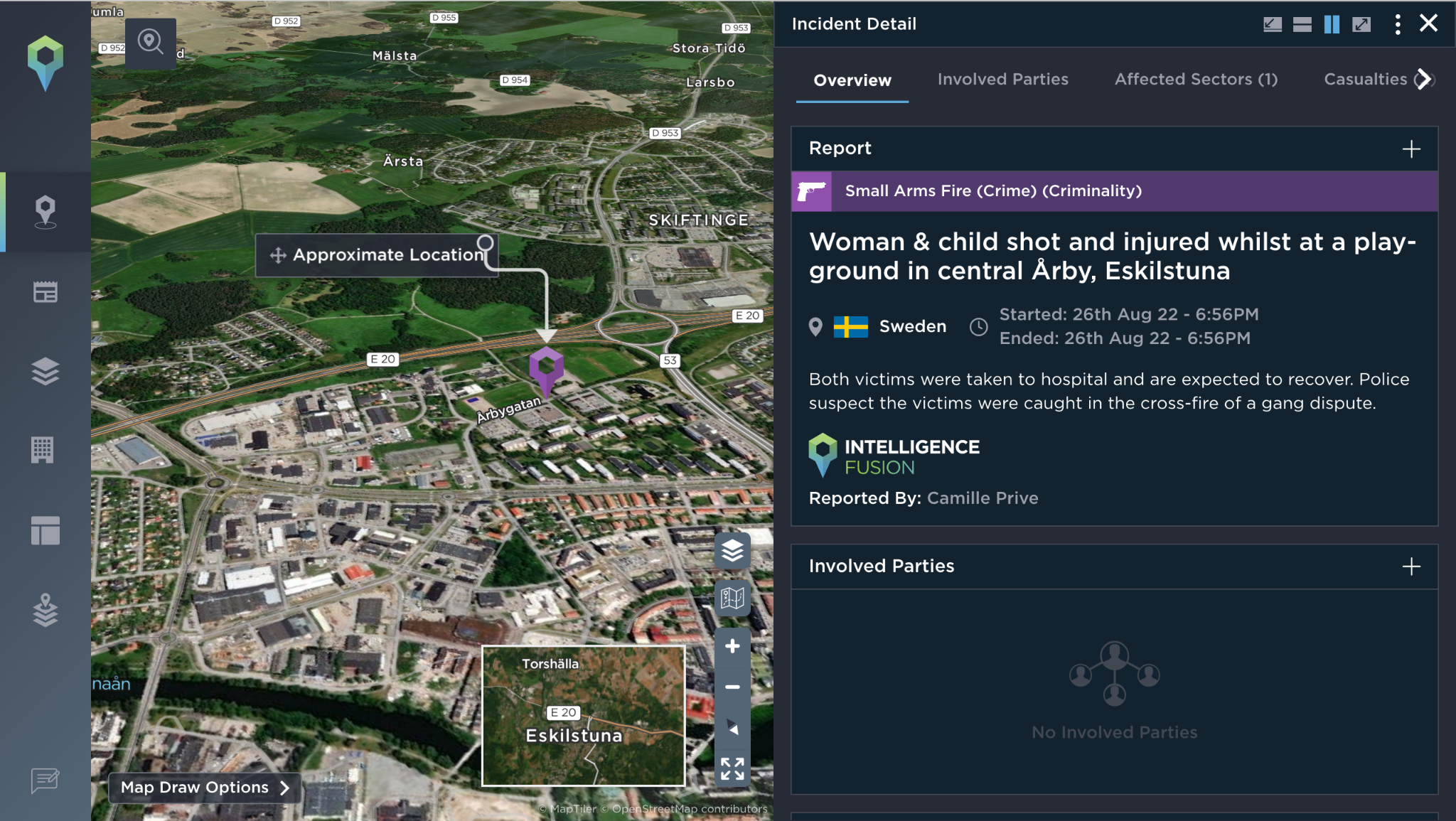
A recent example of a shooting that wounded a civilian bystander - a trend set to grow at the current rate. [Source: Intelligence Fusion]
What next for gun crime in Sweden?
Unless action is taken at all levels, gun crime in Sweden will continue to rise. This only garners more support for nationalist far-right parties, which is not likely to help the integration of Sweden’s migrant population, with racism and xenophobia certain to rise, further compounding a factor of the gun violence problem.
Integral in solving this problem is the government’s responsibility to recognize that the current criminal sentencing laws are not a deterrent, so reform may help in the long run. Furthermore, the influx of illegal weapons needs to be halted, stricter policy is essential to combat this. Although promising in the early stages, it is clear that GVIs will need to be reassessed as to their efficacy in tackling this issue.
Without a multifaceted approach, this epidemic will only get worse, with more innocent Swedes likely to pay the price.
Intelligence Fusion has been tracking the escalation in gun crime in Sweden since 2016. So far this year, we’ve reported almost 4,000 security incidents across Sweden. Our granular level of data and extensive filtering options allows our clients to easily visualise and track the latest developments, whether you require gun-crime specific data or are interested in the broader threat landscape within the country.
If you want to see the data supporting our analysis and try the Intelligence Fusion platform for yourself, arrange some time to speak with a member of our team.
Book a demo below:

